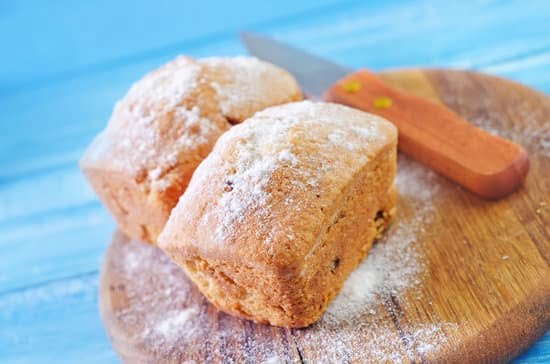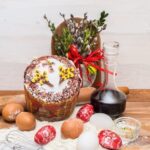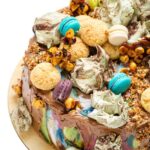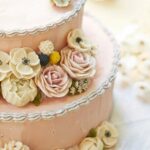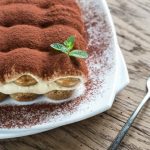When it comes to cake decorating, the right choice of food coloring can make all the difference. The best food coloring for cake decorating not only adds vibrant and eye-catching colors to your creations but also ensures that the taste and quality of your cakes remain uncompromised. Whether you are a professional baker or a home enthusiast, understanding the importance of choosing the right food coloring is essential.
In this article, we will explore why choosing the best food coloring for cake decorating matters and how it can elevate your cake decorating skills to new heights. We will delve into the different types of food colorings available in the market and discuss the factors you should consider when making your selection.
Additionally, we will provide a comprehensive comparison between liquid food coloring and gel food coloring, helping you determine which option is best suited for your specific needs. You will also learn how to achieve different shades and intensities with food coloring and discover valuable tips and tricks from expert cake decorators on using food coloring effectively.
We will highlight common mistakes to avoid when using food coloring for cake decorating, ensuring that your creations turn out flawless every time. Furthermore, we will reveal recommendations from professional cake decorators regarding their preferred food colorings.
Lastly, our FAQs section will address any lingering questions you may have about food coloring for cake decorating. By the end of this article, you will have all the knowledge you need to take your cake decorating skills to a whole new level with the best food coloring options available in the market.
Understanding the Different Types of Food Colorings Available in the Market
When it comes to cake decorating, choosing the right type of food coloring is essential for achieving vibrant and eye-catching results. Understanding the different types of food colorings available in the market will help you make an informed decision and enhance your cake decorating skills.
Natural Food Colorings: Natural food colorings are made from fruits, vegetables, and other plant-based sources. They are a popular choice for those who prefer natural ingredients and want to avoid artificial additives. While natural food colorings may not have the same intensity as synthetic ones, they can still produce beautiful shades when used correctly.
Synthetic Food Colorings: Synthetic food colorings are made from artificial additives and offer intense and vibrant colors. They are often available in liquid or gel form, making them easy to use. However, some people may have concerns about these artificial ingredients or may have allergies or sensitivities to them. It’s important to consider these factors when deciding on synthetic food colorings.
| Type of Food Coloring | Description |
|---|---|
| Natural Food Colorings | Made from fruits, vegetables, and other plant-based sources. They offer more muted shades compared to synthetic colorings. |
| Synthetic Food Colorings | Made from artificial additives that provide intense and vibrant colors. Available in liquid or gel form for ease of use. |
Factors to Consider When Choosing Food Coloring for Cake Decorating
When it comes to choosing food coloring for cake decorating, there are several factors to consider in order to achieve the best results. Here are a few important factors to keep in mind:
- Quality: The quality of the food coloring is crucial in determining the final outcome of your cake decorations. It is recommended to choose high-quality food coloring that is specifically formulated for cake decorating purposes. These food colorings are often made with concentrated pigments, which allow for more vibrant and intense colors.
- Ingredients: Another important factor to consider when choosing food coloring is the ingredients used. Opt for food colorings that are made from natural ingredients and do not contain any artificial additives or preservatives. Natural food colorings are not only healthier but also tend to produce more accurate and true-to-color results.
- Type of Coloring: Food colorings come in various forms, such as liquid, gel, powder, or paste. Each type has its own advantages and disadvantages. Liquid food coloring is readily available and easy to use, making it a popular choice for beginners. Gel food coloring, on the other hand, is more concentrated and tends to produce more vibrant colors without affecting the consistency of your cake batter or icing.
- Color Range: Consider the range of colors available in a particular brand or set of food coloring. Look for sets that offer a wide variety of shades and tones so that you have the flexibility to create different effects and designs.
- Storage Stability: It’s important to choose food colorings that have good storage stability. Some colorings may fade or change over time, especially when exposed to light or heat. Check the labels or product descriptions for information on storage stability before making your purchase.
By taking these factors into consideration when choosing food coloring for cake decorating, you will be able to achieve beautiful and professional-looking cake decorations that will impress your friends and family.
Top 5 Food Colorings for Vibrant and Eye-Catching Cake Decorations
When it comes to cake decorating, using the right food coloring can make a huge difference in the end result. The color and vibrancy of your cake decorations can greatly impact the overall aesthetic appeal of your creation. To help you achieve vibrant and eye-catching designs, here are the top 5 food colorings that professional cake decorators swear by:
- Gel Food Coloring: Gel food coloring is one of the most popular choices among cake decorators. It has a thick consistency that allows you to achieve intense and vibrant colors without adding too much liquid to your icing or batter. Gel food coloring also mixes well with other colors, making it easy to create custom shades.
- Liquid Food Coloring: Liquid food coloring is another common option for cake decorating. It is easily accessible and comes in a wide range of colors. While liquid food coloring may not be as concentrated as gel coloring, it can still produce beautiful results when used in moderation.
- Airbrush Food Coloring: Airbrush food coloring is perfect for creating intricate designs and gradients on your cakes. It comes in liquid form, specifically formulated for use with airbrush machines. This type of food coloring allows you to achieve smooth and seamless transitions between colors, giving your cakes a professional look.
- Edible Metallic Food Coloring: If you’re looking to add a touch of elegance and shine to your cake decorations, edible metallic food coloring is the way to go. This type of food coloring is available in various metallic shades like gold, silver, and bronze. It can be used to create stunning accents or even cover an entire cake for a luxurious finish.
- Natural Food Coloring: For those who prefer a more natural approach to cake decorating, natural food colorings made from plant-based ingredients are an excellent choice. These colorings are free from artificial dyes and additives but still offer plenty of vibrant colors to play with.
Finding the right food coloring for your cake decorating needs may require some experimentation. It’s important to consider factors such as the type of icing or batter you’re working with, the desired intensity of color, and any dietary restrictions or preferences. By utilizing these top 5 food colorings, you’ll be well on your way to creating beautiful and eye-catching cake decorations that will impress everyone who takes a bite.
Comparing Liquid Food Coloring vs. Gel Food Coloring
Differences Between Liquid Food Coloring and Gel Food Coloring
When it comes to food coloring for cake decorating, two popular options are liquid food coloring and gel food coloring. Each type has its own unique characteristics and it is important to understand the differences between them in order to choose the best option for your cake decorating needs.
Liquid food coloring is the most common type of food coloring found in grocery stores. It is made by dissolving artificial or natural colorings in a water-based solution. Liquid food coloring is typically less concentrated than gel food coloring, which means you may need to use more of it to achieve vibrant colors. However, liquid food coloring is easy to work with as it can be easily mixed into cake batter or icing without altering their consistency.
On the other hand, gel food coloring is a thicker and more concentrated form of food coloring. It is made by combining powdered color pigments with a water-based or glycerin-based solution. Gel food coloring is known for producing more intense and vibrant colors compared to liquid food coloring. It also does not thin out batters or icings as much as liquid food coloring does, making it ideal for achieving intricate designs or piping details.
Which Option is the Best?
The choice between liquid food coloring and gel food coloring ultimately depends on your personal preference and the specific effect you want to achieve in your cake decorating. Here are some factors that can help you decide:
- Color Intensity: If you desire bold, vibrant colors without using too much product, gel food coloring would be the better option.
- Consistency: If you are concerned about thinning out your icing or batter too much, opt for gel food coloring as it has a thicker consistency.
- Ease of Use: Liquid food coloring is easier to mix into batters and icings due to its watery texture, whereas gel food coloring may require a bit more effort to fully incorporate.
- Shelf Life: Gel food coloring generally has a longer shelf life compared to liquid food coloring, making it a more durable option for long-term storage.
By considering these factors, you can choose the best option between liquid food coloring and gel food coloring to enhance your cake decorating skills and create stunning edible works of art.
How to Achieve Different Shades and Intensities with Food Coloring
Achieving different shades and intensities with food coloring is essential in cake decorating. It allows decorators to create a variety of colors and effects, from pastels to bold and vibrant hues. Here are some tips on how to achieve different shades and intensities with food coloring:
- Start with a small amount: When adding food coloring to frosting or batter, start with a small amount and gradually add more as needed. This will help you control the intensity of the color and prevent over-saturating the mixture.
- Mix primary colors: To create different shades, mix primary colors together. For example, red and blue can be combined to make purple, while yellow and red can be mixed to create orange.
- Use a color chart: Keep a color chart handy to guide you in achieving specific shades. A color chart shows how much of each color to use in order to create desired hues.
- Experiment with different ratios: Changing the ratio of each color in your mixture can help you achieve lighter or darker shades. For example, adding more yellow than red will result in a lighter shade of orange.
- Allow colors to develop: Some food colorings may take time for the true color to develop fully. Letting your colored frosting sit for about 30 minutes before using it can help deepen the shade.
- Consider the base ingredients: Keep in mind that the base ingredients used in your recipe can affect the final color outcome. For instance, chocolate cake batter may yield darker tones compared to vanilla batter.
By following these tips, you can achieve a wide range of shades and intensities with food coloring for cake decorating. Remember to experiment and have fun exploring different combinations until you find the perfect color for your creations.
Tips and Tricks for Using Food Coloring in Cake Decorating
Food coloring is an essential tool for cake decorators, as it allows them to transform plain cakes into vibrant and eye-catching masterpieces. However, using food coloring effectively requires some tips and tricks to achieve the desired results. Whether you are a beginner or experienced cake decorator, these tips and tricks will help you use food coloring like a pro.
One important tip when using food coloring is to start with a small amount and gradually add more if needed. This is especially true for gel food coloring, which is highly concentrated compared to liquid food coloring. By starting with a small amount, you can control the intensity of the color and avoid using too much dye, which can alter the taste and texture of your cake.
Another helpful trick is to use toothpicks or skewers to add drops of food coloring to your icing or batter. This allows for precise control over the amount of dye added and helps create intricate designs or delicate patterns. You can mix different colors on a separate palette before adding them to your batter or icing, ensuring that you achieve the exact shades you desire.
Using food coloring in layers is also a great technique for creating depth and dimension in your cake decorations. For example, if you want to create an ombre effect on your cake, start with a small amount of dye in your batter or icing and gradually increase the intensity with each layer. This creates a beautiful gradient that adds visual interest to your final creation.
| Tip/Trick | Description |
|---|---|
| Start with a small amount | Add color gradually to control intensity |
| Use toothpicks or skewers | Add drops of coloring for precise control |
| Create layers | Add colors in gradual intensity for ombre effects |
By following these tips and tricks, you can use food coloring effectively to elevate your cake decorating skills and create stunning cakes that will impress everyone. Experiment with different techniques and have fun exploring the endless possibilities that food coloring offers in cake decoration.
Common Mistakes to Avoid When Using Food Coloring for Cake Decorating
When it comes to cake decorating, using food coloring can be a game-changer. It allows you to add vibrant and eye-catching hues to your creations, elevating them to a whole new level. However, there are common mistakes that many people make when using food coloring for cake decorating. By being aware of these mistakes, you can avoid them and achieve flawless results every time.
Overusing Food Coloring
One of the most common mistakes is overusing food coloring. It’s easy to get carried away and add too much color to your batter or icing, resulting in an unnatural and unappealing appearance. To avoid this, start with a small amount of food coloring and gradually add more until you achieve the desired shade. Remember that it’s easier to add more color than it is to remove it, so take it slow.
Not Using Gel Colors for Vibrancy
Liquid food coloring may seem convenient, but when it comes to achieving vibrant colors for cake decorating, gel colors are the way to go. Liquid colors tend to be more diluted and can affect the consistency of your batter or icing if used in large quantities. On the other hand, gel colors are highly concentrated, allowing you to achieve intense shades without compromising the texture of your creations.
Not Considering the Base Color
The base color of your cake or icing can greatly influence the final result when using food coloring. If you’re aiming for a bright or pastel shade, use white as your base. If you’re working with chocolate-flavored cakes or brown icing, keep in mind that the final color will be influenced by this base hue. Always take into account how the base color will interact with your chosen food coloring.
By avoiding these common mistakes, you can make sure that your cake decorations turn out as vibrant and visually appealing as possible. Keep these tips in mind for your next baking project, and you’re sure to impress everyone with your beautifully colored creations.
Expert Recommendations
Professional cake decorators understand the importance of using high-quality food colorings to achieve exceptional results. Here, we will explore some expert recommendations for the best food colorings that professional cake decorators prefer.
Liquid Food Coloring: AmeriColor Soft Gel Paste Colors
One highly recommended option among professional cake decorators is the AmeriColor Soft Gel Paste Colors. These liquid food colorings come in a wide range of vibrant and intense shades that can easily be mixed to create custom colors. The gel-like consistency allows for easy blending and prevents the colors from bleeding or fading during baking. Additionally, these food colorings are highly concentrated, which means you only need a small amount to achieve bold and eye-catching results.
Gel Food Coloring: Chefmaster Liqua-Gel Decorating Colors
Another popular choice among professional cake decorators is the Chefmaster Liqua-Gel Decorating Colors. These gel-based food colorings are highly concentrated, providing vibrant and intense hues without altering the texture of your cake batter or frosting. They also blend seamlessly, allowing you to create a variety of shades and tones. The convenient squeeze bottles make it easy to control the amount of coloring needed, ensuring consistent results every time.
Natural Food Coloring: ColorKitchen Decorative Food Colors
For those seeking natural alternatives, professional cake decorators often recommend ColorKitchen Decorative Food Colors. Made from plant-based ingredients like spirulina extract, turmeric, and beet powder, these natural food colorings are free from artificial additives and preservatives. Despite their natural origins, they still deliver vibrant and rich colors that are perfect for decorating cakes. With ColorKitchen Decorative Food Colors, you can achieve stunning results while keeping your cakes as clean and natural as possible.
These expert-recommended food colorings offer both quality and versatility when it comes to cake decorating. By using these trusted brands, you can confidently create visually appealing cakes that are sure to impress. Whether you prefer liquid, gel, or natural food colorings, these options will elevate your cake decorating skills and take your creations to the next level.
FAQs
Q: Can I use regular food coloring for cake decorating?
Regular food coloring can certainly be used for cake decorating, but it may not produce the vibrant and intense colors that you desire. Regular food coloring is typically water-based and can affect the consistency of your batter or icing if used in large quantities.
It is best suited for light pastel shades rather than bold colors. If you are looking to create eye-catching designs and intense hues, it is recommended to use specially formulated gel or powdered food coloring instead.
Q: Can I mix different colors of food coloring to create new shades?
Yes, mixing different colors of food coloring is a great way to achieve new shades and variations. By combining primary colors like red, blue, and yellow, you can create a wide range of secondary colors such as purple, green, and orange. Experimenting with different ratios will allow you to customize the intensity of your shades.
However, keep in mind that certain color combinations might result in unwanted muddy tones. It’s always a good idea to start with small amounts and gradually adjust until you achieve your desired shade.
Q: How much food coloring should I use for my cake decorations?
The amount of food coloring you should use depends on the intensity of color you want to achieve and the quantity of batter or icing you are working with. As a general guideline, start with a small amount of color and gradually add more until you reach the desired shade. Remember that gel or powdered food colorings are more concentrated than liquid ones, so less product is needed to achieve the same intensity.
In most cases, a few drops or dabs will be sufficient for small batches of icing or batter. It’s always better to add color gradually than risk overdoing it and ending up with an unappetizing hue.
By following these FAQs about food coloring for cake decorating, you can gain a better understanding of how to use food coloring effectively to enhance your cake decorations. Experimentation and practice are key, so don’t be afraid to try different techniques and combinations to achieve the desired visual effect for your cakes.
Keep in mind that personal preference plays a significant role in choosing the best food coloring for cake decorating, so don’t hesitate to test out different brands and types until you find what works best for you.
Conclusion
In conclusion, choosing the best food coloring for cake decorating is an important factor in elevating your cake decorating skills. With a wide range of options available in the market, understanding the different types of food colorings and considering various factors can help you make an informed decision.
Liquid food coloring and gel food coloring are two popular options for cake decoration. While liquid food coloring is readily available and easy to use, gel food coloring offers vibrant and intense colors without adding excess liquid to your batter or icing. Depending on your desired outcome, both options have their own advantages.
Achieving different shades and intensities with food coloring requires experimentation. Mixing primary colors together can help you create a wide spectrum of shades. Additionally, using complementary colors can intensify the hues of your decorations.
To make the most out of your food coloring, it is important to keep some tips and tricks in mind. Start by using small amounts and gradually add more if needed. Remember that the color may deepen over time, so allow enough time for the color to develop before making any adjustments.
Lastly, learning from expert recommendations can be beneficial in selecting the best food colorings for cake decorating. Professional cake decorators often have preferences based on their experience in creating vibrant and eye-catching designs.
By taking these factors into consideration and utilizing expert recommendations and tips, you can enhance your skills as a cake decorator. Whether you are a beginner or an experienced baker, choosing high-quality food colorings will contribute to stunning creations that will impress everyone who sees or tastes your cakes.
Frequently Asked Questions
What food coloring do professional bakers use?
Professional bakers often use gel food coloring for their creations. Gel food coloring is favored among professionals because it offers intense, vibrant colors without adding excess liquid to the recipe.
This type of food coloring comes in a concentrated form, allowing bakers to achieve precise color shades while maintaining the desired texture of their baked goods. Additionally, gel food coloring blends easily into different types of batters or icings, making it a reliable choice for professional bakers.
What type of food coloring is best for cake?
When it comes to cakes, the best type of food coloring to use is gel-based or paste food coloring. Gel-based food coloring provides highly concentrated colors and does not affect the consistency or structure of the cake batter.
It blends smoothly into the mixture, allowing bakers to achieve beautiful and even colors in their cakes without compromising on texture or taste. The gel-based or paste food coloring also ensures that the vibrant colors will remain stable even after baking, resulting in visually appealing cake layers.
What’s the best food coloring for buttercream?
The best food coloring option for buttercream is again gel-based or paste food coloring. Buttercream is a creamy frosting made with butter and powdered sugar, and using liquid-based food coloring can potentially add unwanted moisture to this delicate mixture.
Gel-based or paste food coloring offers concentrated pigments without introducing excess liquid, which helps preserve the smoothness and stability of buttercream frosting. Additionally, when incorporating gel-based colorants into buttercream, it is easier to control the intensity by gradually adding small amounts until the desired shade is reached while maintaining a perfect piping consistency for decorating purposes.

Welcome to our cake decorating blog! My name is Destiny Flores, and I am the proud owner of a cake decorating business named Cake Karma. Our mission is to provide delicious, beautiful cakes for all occasions. We specialize in creating custom cakes that are tailored specifically to each customer’s individual needs and tastes.

